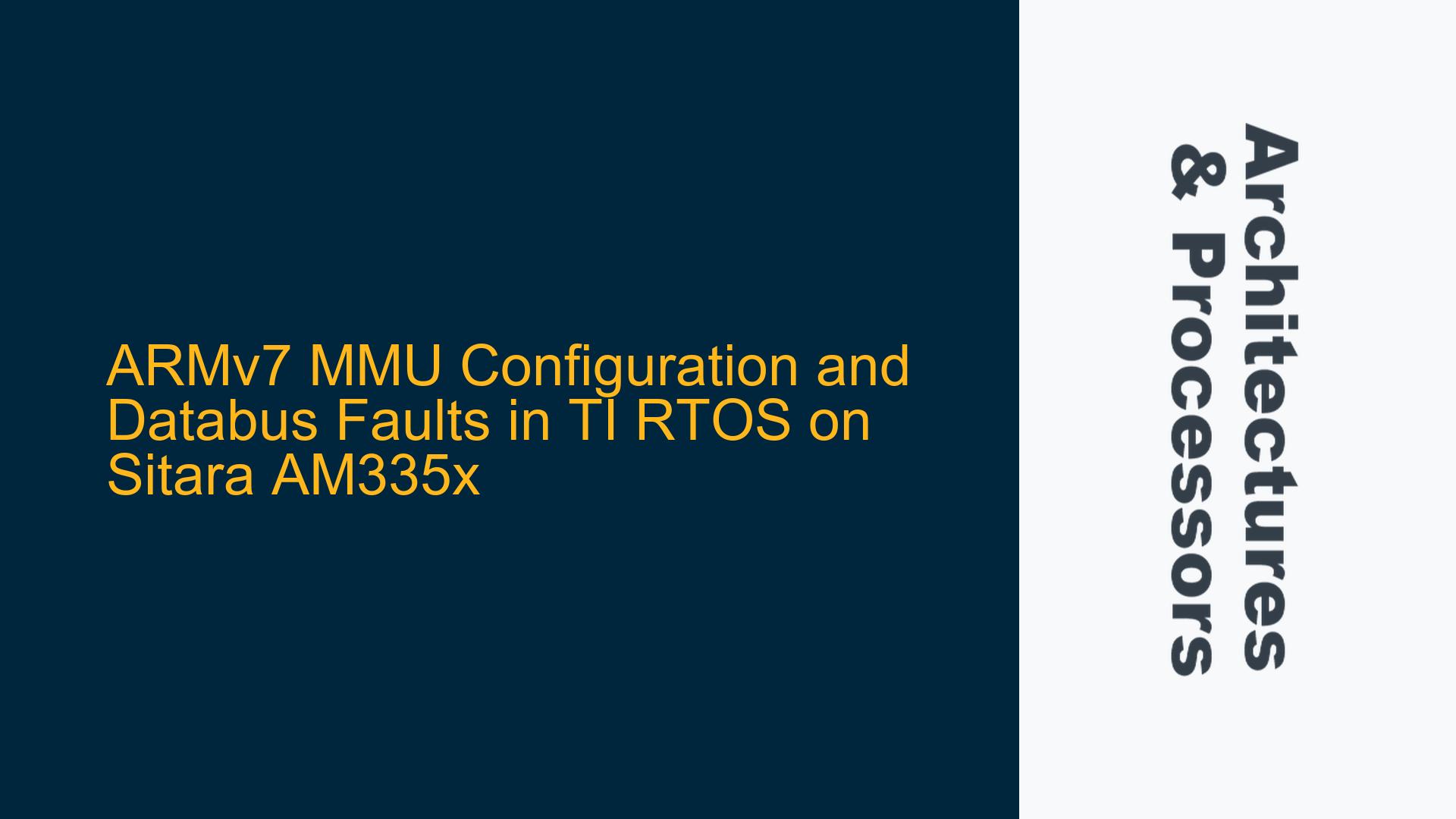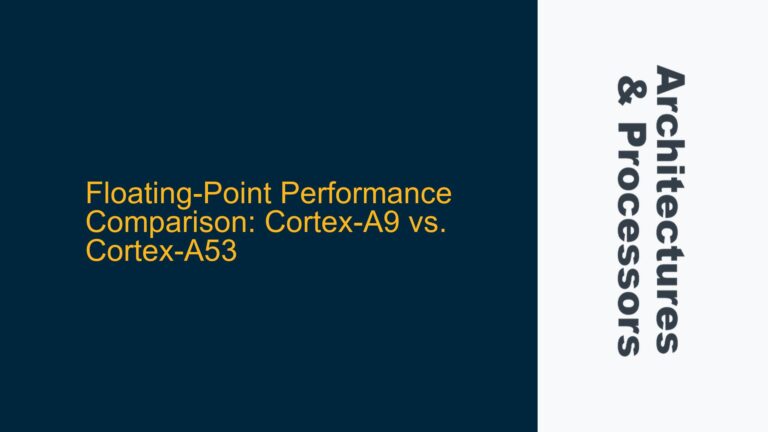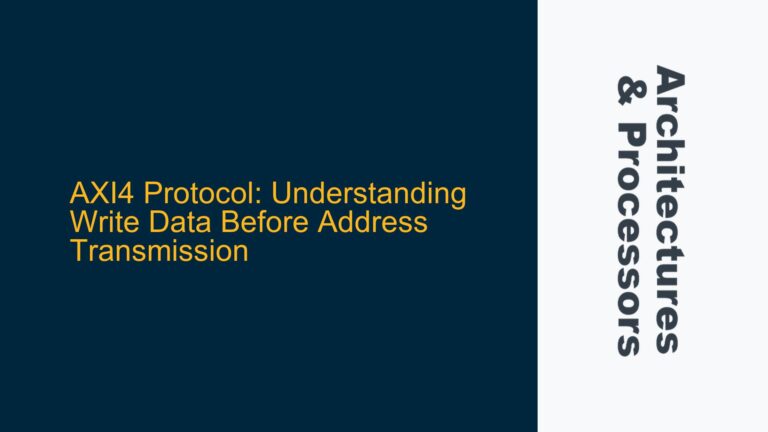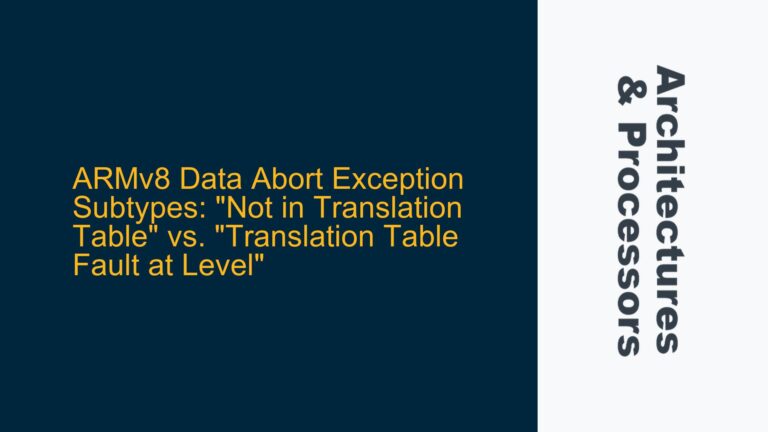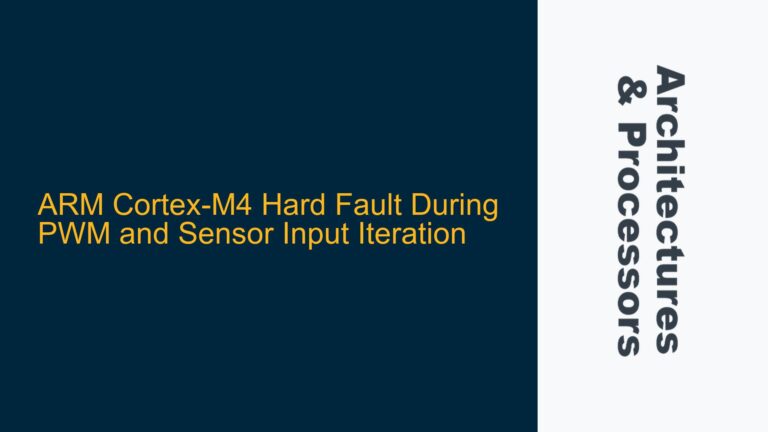ARMv7 MMU Configuration and Databus Faults in TI RTOS on Sitara AM335x
The ARMv7 architecture, particularly when implemented in complex System-on-Chip (SoC) designs like the Texas Instruments (TI) Sitara AM335x, introduces advanced features such as the Memory Management Unit (MMU), which can lead to unexpected behaviors like databus faults when not properly configured. This issue is particularly prevalent when transitioning from simpler microcontroller environments, such as those based on Cortex-M series processors, to more sophisticated applications involving Real-Time Operating Systems (RTOS) like TI-RTOS. The root cause often lies in the improper configuration of the MMU, which is responsible for virtual-to-physical address translation, memory protection, and access control. When the MMU is enabled without proper page table setup or memory region definitions, it can result in databus faults, especially when accessing peripherals or memory-mapped registers.
The ARMv7-A architecture, used in the Sitara AM335x, supports multiple operating modes (e.g., User, Supervisor, IRQ, FIQ, Abort, Undefined, and System) and banked registers, which further complicate the debugging process. The MMU in ARMv7-A uses a two-level page table structure to manage memory access, and any misconfiguration in these tables can lead to access violations. Additionally, the ARMv7-A architecture supports privileged and unprivileged execution modes, which can further restrict access to certain memory regions or peripherals if not properly managed.
In the context of TI-RTOS, the operating system typically enables the MMU during initialization to provide memory protection and virtual memory capabilities. However, if the MMU configuration does not correctly map the peripheral memory regions or if the access permissions are improperly set, any attempt to access these regions will result in a databus fault. This is especially problematic when working with custom or less-documented peripherals, as the default MMU configuration provided by TI-RTOS may not account for all possible use cases.
MMU Misconfiguration and Peripheral Memory Access Violations
The primary cause of databus faults in this scenario is the misconfiguration of the MMU, specifically the page tables that define the memory mapping and access permissions. The ARMv7-A architecture uses a hierarchical page table structure, with Level 1 (L1) and Level 2 (L2) tables. The L1 table defines coarse-grained memory regions, while the L2 table provides fine-grained control over individual pages. Each entry in these tables includes attributes such as access permissions (read/write/execute), cacheability, and whether the region is shared or not.
When TI-RTOS enables the MMU, it typically initializes the page tables to map the core memory regions required by the operating system, such as the code, data, and stack segments. However, it may not include mappings for all peripheral memory regions, especially if these regions are not used by the default RTOS components. If a peripheral memory region is not mapped in the page tables, any attempt to access it will result in a translation fault, which manifests as a databus fault.
Another common issue is the incorrect setting of access permissions in the page tables. For example, if a peripheral memory region is mapped but marked as read-only, any attempt to write to it will result in a permission fault. Similarly, if the region is marked as non-executable, any attempt to execute code from that region will also result in a fault. These issues are particularly challenging to debug because the fault may not occur immediately; it may only manifest when a specific sequence of operations is performed.
In addition to MMU misconfiguration, other potential causes of databus faults include:
-
Incorrect Peripheral Base Addresses: The Sitara AM335x has a complex memory map, with peripherals located at specific base addresses. If the base address used in the code does not match the actual hardware configuration, any access to the peripheral will result in a fault.
-
Cache Coherency Issues: The ARMv7-A architecture supports cacheable and non-cacheable memory regions. If a peripheral memory region is marked as cacheable but the peripheral does not support cache coherency, any access to the region may result in stale data being read or written, leading to unexpected behavior.
-
Privilege Level Violations: The ARMv7-A architecture supports multiple privilege levels, with certain operations (e.g., accessing specific control registers) restricted to privileged modes. If an unprivileged task attempts to perform a restricted operation, it will result in a fault.
-
Alignment Faults: The ARMv7-A architecture requires certain data types to be aligned to specific boundaries. For example, 32-bit words must be aligned to 4-byte boundaries. If an unaligned access is attempted, it will result in an alignment fault.
Implementing Proper MMU Configuration and Debugging Databus Faults
To resolve databus faults caused by MMU misconfiguration, the first step is to ensure that the page tables are correctly set up to map all required memory regions, including peripheral memory. This involves defining the base addresses, sizes, and access permissions for each region in the L1 and L2 page tables. The following steps outline the process for configuring the MMU and debugging databus faults:
-
Identify the Faulting Address: When a databus fault occurs, the ARMv7-A architecture provides fault status registers that can be used to identify the faulting address and the type of fault (e.g., translation fault, permission fault, alignment fault). These registers include the Data Fault Status Register (DFSR) and the Data Fault Address Register (DFAR). By examining these registers, you can determine the exact memory address that caused the fault and the reason for the fault.
-
Verify Peripheral Base Addresses: Ensure that the base addresses used in the code match the actual hardware configuration. The Sitara AM335x Technical Reference Manual provides the memory map for the SoC, including the base addresses for all peripherals. Cross-reference these addresses with the addresses used in the code to ensure they are correct.
-
Configure Page Tables: Define the memory regions in the L1 and L2 page tables, ensuring that all peripheral memory regions are mapped with the correct access permissions. The following table provides an example of how to define a memory region in the page tables:
Memory Region Base Address Size Access Permissions Cacheability Shareability Peripheral A 0x48000000 0x1000 Read/Write Non-cacheable Non-shareable Peripheral B 0x48100000 0x1000 Read/Write Non-cacheable Non-shareable Code 0x80000000 0x100000 Read/Execute Cacheable Shareable Data 0x80100000 0x100000 Read/Write Cacheable Shareable -
Enable the MMU: Once the page tables are configured, enable the MMU by setting the appropriate bits in the System Control Register (SCTLR). This will activate the virtual memory system and apply the memory mappings defined in the page tables.
-
Test Access to Peripherals: After enabling the MMU, test access to the peripheral memory regions to ensure that they are correctly mapped and that no faults occur. If a fault occurs, revisit the page table configuration to verify that the memory region is correctly defined.
-
Handle Cache Coherency: If the peripheral memory region is marked as cacheable, ensure that the cache is properly managed to maintain coherency. This may involve using cache maintenance operations, such as cleaning or invalidating the cache, before or after accessing the peripheral memory.
-
Debug Privilege Level Violations: If a fault occurs due to a privilege level violation, ensure that the task attempting the operation is running in the correct privilege mode. This may involve modifying the task’s execution mode or using a system call to perform the operation in a privileged context.
-
Resolve Alignment Faults: Ensure that all data accesses are properly aligned to the required boundaries. If unaligned accesses are necessary, use the appropriate instructions or compiler directives to handle them correctly.
By following these steps, you can effectively configure the MMU and resolve databus faults in ARMv7-A-based systems like the Sitara AM335x. Proper MMU configuration is critical for ensuring reliable operation of the system, especially when using an RTOS that enables advanced features like virtual memory and memory protection.
